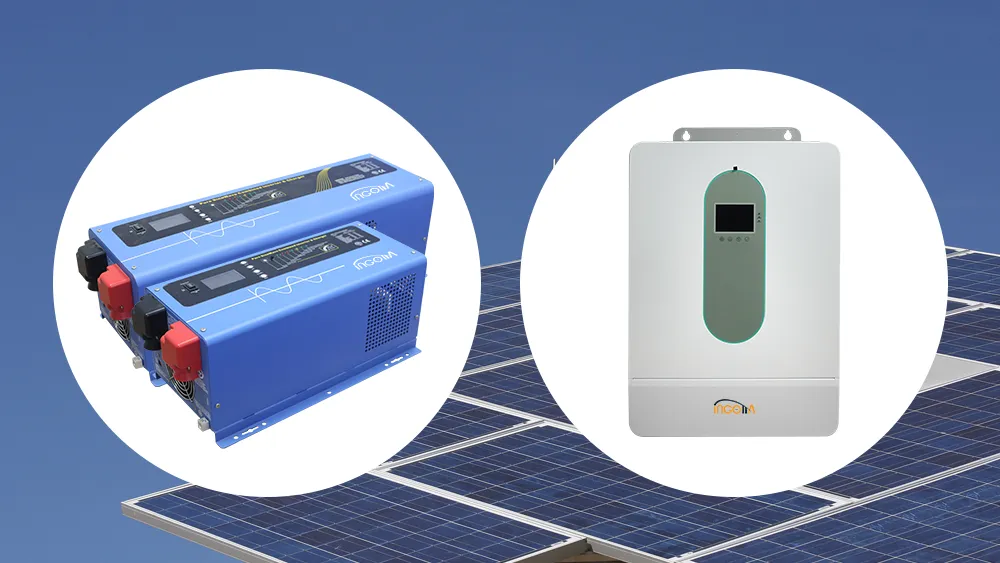High-Frequency Inverter vs. Low-Frequency Inverter: Key Differences Explained
When it comes to choosing the right power inverter for your needs, understanding the difference between high-frequency inverters and low-frequency inverters is essential. Both types serve the purpose of converting DC power to AC power, but they do so in distinct ways, each with its own set of advantages and limitations. Whether you’re powering household appliances, running tools on a job site, or setting up an off-grid solar system, knowing which inverter type best fits your requirements can save you time, money, and frustration. In this article, we’ll break down the key differences between high-frequency and low-frequency inverters to help you make an informed decision.
What Is an Inverter?
An inverter is an electronic device that converts direct current (DC) from sources like batteries or solar panels into alternating current (AC), which is used by most household and commercial appliances. Inverters are crucial for off-grid power systems, backup power solutions, and mobile applications like RVs and boats. The two primary types of inverters—high-frequency and low-frequency—differ in their internal design, efficiency, durability, and suitability for various loads.
High-Frequency Inverters: Lightweight and Efficient
High-frequency inverters use advanced switching technology with high-frequency transformers and electronic components to convert DC to AC. They operate at switching frequencies typically above 20 kHz, allowing for a more compact and lightweight design.
Advantages of High-Frequency Inverters
- Lightweight and Compact: Ideal for portable applications where space and weight are concerns.
- Higher Efficiency: Often achieve efficiencies of 90% or more, especially at lighter loads.
- Cost-Effective: Generally less expensive to manufacture and purchase.
- Quiet Operation: Produces less audible noise compared to low-frequency models.
Limitations of High-Frequency Inverters
- Lower Surge Capacity: Less capable of handling high startup currents from motors or compressors.
- Reduced Durability: More sensitive to overloads and may have a shorter lifespan under heavy use.
- Not Ideal for Inductive Loads: Struggles with appliances like refrigerators, pumps, or power tools that require high initial power.
Low-Frequency Inverters: Robust and Reliable
Low-frequency inverters utilize larger, heavy-duty transformers operating at lower frequencies (typically 50-60 Hz). This design provides inherent robustness and the ability to handle high surge currents, making them suitable for demanding applications.
Advantages of Low-Frequency Inverters
- High Surge Capacity: Can handle startup currents several times their rated capacity, perfect for motor-driven appliances.
- Durability: Built to withstand overloads and harsh conditions, often lasting longer.
- Better for Inductive Loads: Excellently powers devices like air conditioners, washing machines, and industrial equipment.
- Stable Output: Provides a cleaner and more stable sine wave, reducing the risk of damaging sensitive electronics.
Limitations of Low-Frequency Inverters
- Heavier and Bulkier: Due to the large transformer, they are less portable.
- Lower Efficiency: Typically 80-85% efficient, especially at lighter loads, leading to higher energy losses.
- Higher Cost: More expensive to produce and purchase.
- Audible Hum: The transformer can produce a noticeable humming sound during operation.
Key Differences Summarized
| Feature | High-Frequency Inverter | Low-Frequency Inverter |
|---|---|---|
| Size and Weight | Lightweight, compact | Heavy, bulky |
| Efficiency | High (90%+) at light loads | Moderate (80-85%) |
| Surge Capacity | Low | High |
| Durability | Less robust | Very durable |
| Cost | Lower | Higher |
| Ideal For | Electronics, lighting, small loads | Motors, pumps, heavy appliances |
| Noise Level | Quiet | Audible hum |
Which One Should You Choose?
Your choice between a high-frequency inverter and a low-frequency inverter depends largely on your specific needs:
- For portable or light-duty use (e.g., camping, laptops, phones): A high-frequency inverter is cost-effective, efficient, and easy to carry.
- For heavy-duty applications (e.g., power tools, refrigerators, well pumps): A low-frequency inverter offers the reliability and surge capacity needed.
- For mixed loads: Consider your highest power demands; if you frequently run motors, a low-frequency model is safer.
Conclusion
Understanding the difference between high-frequency and low-frequency inverters is key to selecting the right power solution for your needs. High-frequency inverters shine in portability and efficiency for lighter loads, while low-frequency inverters provide unmatched durability and surge handling for heavier applications. By evaluating your power requirements, budget, and intended use, you can choose an inverter that delivers reliable performance and longevity. Whether you’re going off-grid or simply need a backup power source, making an informed decision ensures you get the most out of your investment.
Table of Contents
